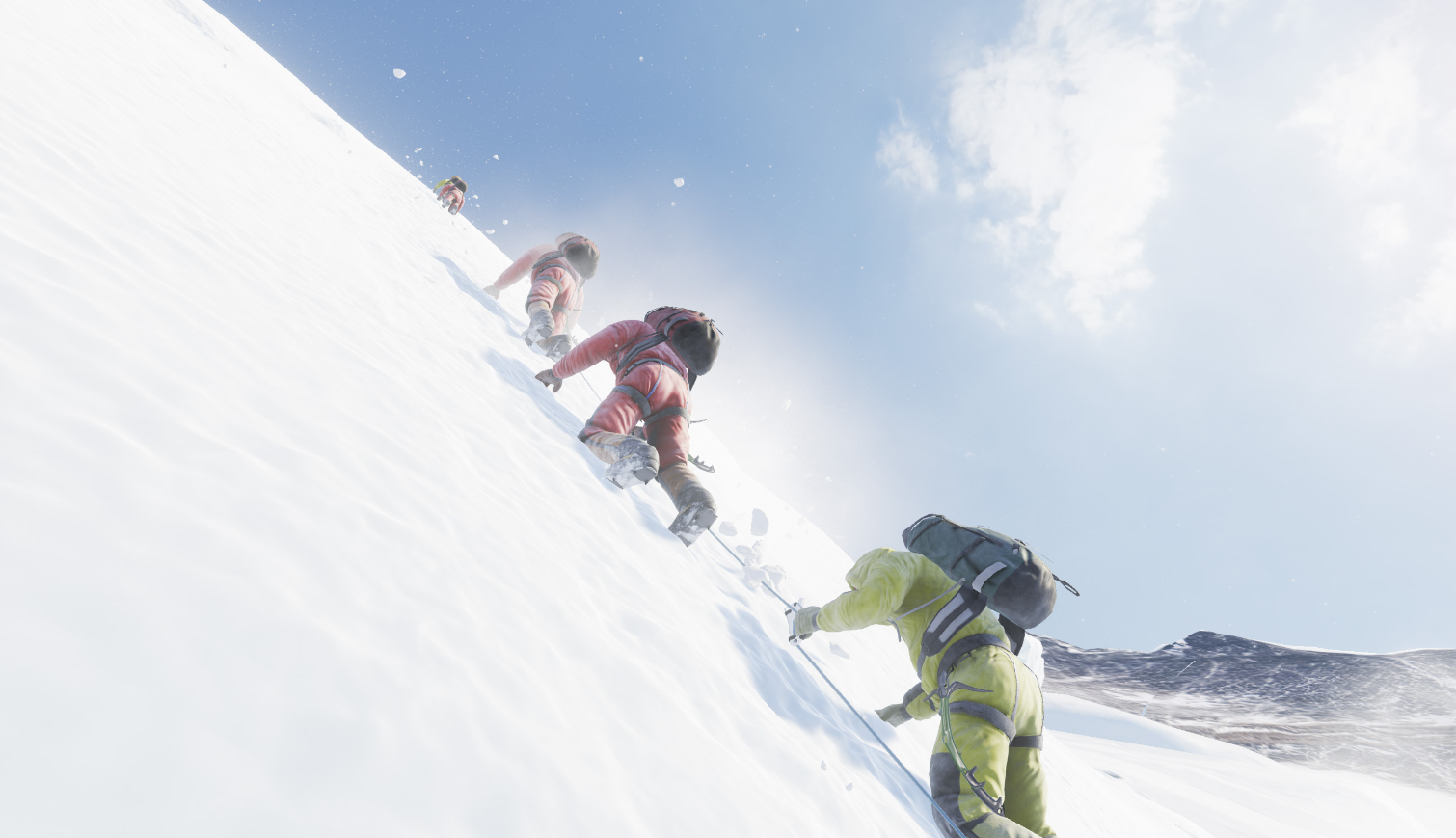'Everest VR' Gets Oculus Touch Support, Additional Content
Solfar Studios’ Everest VR experience debuted for Vive in August 2016 (and we went hands-on just beforehand). Now that Oculus Touch controllers are available, the developer extended the game’s support to Rift owners, too.
Everest VR puts you in the shoes of an adventurer attempting the harrowing trek to the top to the world. You feel what it's like to reach several well-known milestones on the way to the peak, including rallying at the Base Camp before making the ascent, climbing the ladders on the Khumbu Icefall, and taking the final steps to the Summit.
Solfar Studios didn't just spend the last six months sitting on its hands, waiting for the Touch controllers to debut; the developer added quite a bit more content to the game, too. In the original release of Everest VR, after you complete the trip to the Summit, you unlock God Mode, which allows you to fly over the whole of Mt. Everest. The new version of the educational experience gives you more to do in God Mode.
Solfar Studios also improved the ascent experience. There's now an interactive first-person climbing sequence that takes you up the Lhotse Face, which is one of the most challenging stretches of any Everest expedition.
“Our team has worked tirelessly to optimize EVEREST VR for Oculus Rift,” said Kjartan Pierre Emilsson, co-founder, and CEO of Sólfar Studios. “We’ve made numerous content updates to ensure that users have the most visually accurate experience of ascending Mt. Everest, including an expansion to our ‘God Mode’ and the addition of The Lhotse Face ascent. We’re particularly proud of the addition of the 1953 Hillary expedition photographs to the experience, which brings an entirely new documentary lens to the experience of being on the mountain in VR.”
Along with Rift support, Solfar Studios added 18 historical routes for you to learn about, including the route that the first men to successfully reach the summit, Edmund Hillary and Tensing Norgay, took in 1953. Solfar Studios said that once you reach the summit, you can go back in God Mode and learn about the various paths up the mountain and view color photos that were taken during the trips. The developer said that you'd get to look at many of the pictures from the perspective they were taken.
Solfar Studios recreated the historical routes with photos provided by the Royal Geographical Society in London, and special effects and animation company RVX helped piece it all together. The goal was to recreate Mt. Everest with as much detail as possible. RVX used tens of thousands of high-resolution photos and the power of the Unreal engine to build a photorealistic representation of the mountain.
Get Tom's Hardware's best news and in-depth reviews, straight to your inbox.
Everest VR is available for $14.99 on the Oculus Home store. The developer didn’t add Rift support to the Steam VR version of the game.
Kevin Carbotte is a contributing writer for Tom's Hardware who primarily covers VR and AR hardware. He has been writing for us for more than four years.
-
Jeff Fx This had been considered impressive, but overpriced for the brief experience offered. It looks like they fixed that problem both by adding content, and by a price drop.Reply



